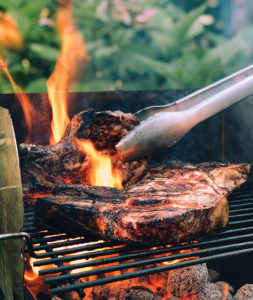Grilling Always A Summer Favorite
Start with a Clean Grill
Use a wire brush to clean the grates and remove any food residue or char. Then wipe down with paper towels or cloth using some vegetable oil. To clean a gas grill, turn your grill on high for 10 to 15 minutes with the lid closed to burn off any extra bits. Then turn off and let it cool slightly. Loosen the residue from the grill rack with a stainless-steel grill brush. No brush? Try a long-handled metal spatula or grip a ball of foil with a pair of tongs and rub the grates.
Have your Essential Barbecue Tools
An instant-read thermometer. Use it to check the internal temperature of the meat. A good pair of tongs and spatula. Potholders and a barbecue brush for cleaning
Direct or Indirect Grilling?
If the food takes less than 20 minutes to cook, use direct heat; if it takes longer, use indirect heat. This is especially good for grilling chicken to ensure juicy results. Smaller pieces like breasts and thighs are best grilled directly, while whole chickens should be grilled indirectly.
How High Should the Heat Be?
When using charcoal, let it burn until it’s covered with a thin coat of gray ash. Hold your hand about six inches above the grate. After three seconds, the temperature of the heat should force you to snatch your hand away. When using a gas grill, preheat to high. This takes 10 to 15 minutes. When indirect grilling, preheat the grill to 350 degrees Fahrenheit.
Let your Meat Rest before Grilling
Let your steak rest out of the fridge for at least 30 minutes before cooking. If you throw a cold steak on the grill, it will not cook as evenly and will dry out much more easily.
Use This Tip for Hamburgers
To ensure your hamburger cooks evenly, make a thumbprint indentation into each patty before it goes on the grill. The indentation helps the patty hold its shape, rather than ending up puffy on the top.
Don’t move the food around
In general, the fewer times you flip something, the better (once is ideal for most meats). If the meat is stuck to the grill, let it cook more — it will unstick itself when it’s ready for flipping.
Undercook foods, just slightly
Food continues to cook after it leaves the grill. You can expect food temperature to go up about five degrees after leaving the grill, so plan accordingly.
Keep a spray bottle handy for flare-ups
Flames are not your friend — they will char your food unpleasantly. Keep a spray bottle filled with water handy; this will allow you to dampen flare-ups without interfering with heat.







